Kevin Clarke
Operetta Research Center
11 October, 2021
Did it really take until 2021 for a complete Countess Mariza recording to come out? Of course, there have been various, well-known previous ‘complete’ versions. To name just a few: there’s the one with Sena Jurinac, Karl Terkal and the Hamburg Radio Orchestra under conductor Wilhelm Stephan from 1952, there’s Anneliese Rothenberger and Nicolai Gedda under Willy Mattes, with the Graunke Symphony Orchestra from 1972; or, as the last entry in the discography to date, there’s the double CD conducted by Uwe Theimer in 1999, with the Vienna Opera Ball Orchestra and Izabel Labuda plus Ryszard Karczykowskí as Mariza and Tassilo.

The 2021 release of “Gräfin Mariza” on cpo. (Photo: cpo / BR Klassik)
There’s also been an endless number of highlight recordings on which you can hear the main hits from this 1924 show: be it with Fritz Wunderlich, Peter Minich or Nikolai Schukoff, or with Sari Barabas, Friedl Loor or Margit Schramm.
Not to forget: there is a complete recording in English from Ohio Light Opera, recorded live in Wooster in 2004 with Julie Wright in the title role and Brian Woods performing Tassilo. This recording even contains the extra song Emmerich Kálmán composed for the 1932 film version.
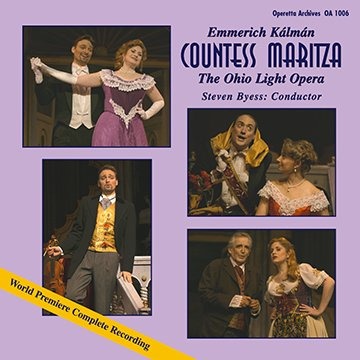
The “Countess Maritza” recording from Wooster. (Photo: Ohio Light Opera)
All of the recordings mentioned above are missing something somewhere, sometimes it’s the children’s chorus in the 1st act, sometimes it’s Tassilo’s 3rd act Schlager (“Wer hat euch erdacht, ihr holden Frau’n”), sometimes it’s the underscoring that serves as introduction to the blockbuster numbers etc. etc.
Now, conductor Ernst Theis has presented the first recording with the Münchner Rundfunkorchester, which contains all (really all!) musical numbers, including dance evolutions, as printed in the Octava piano score. Chapeau!
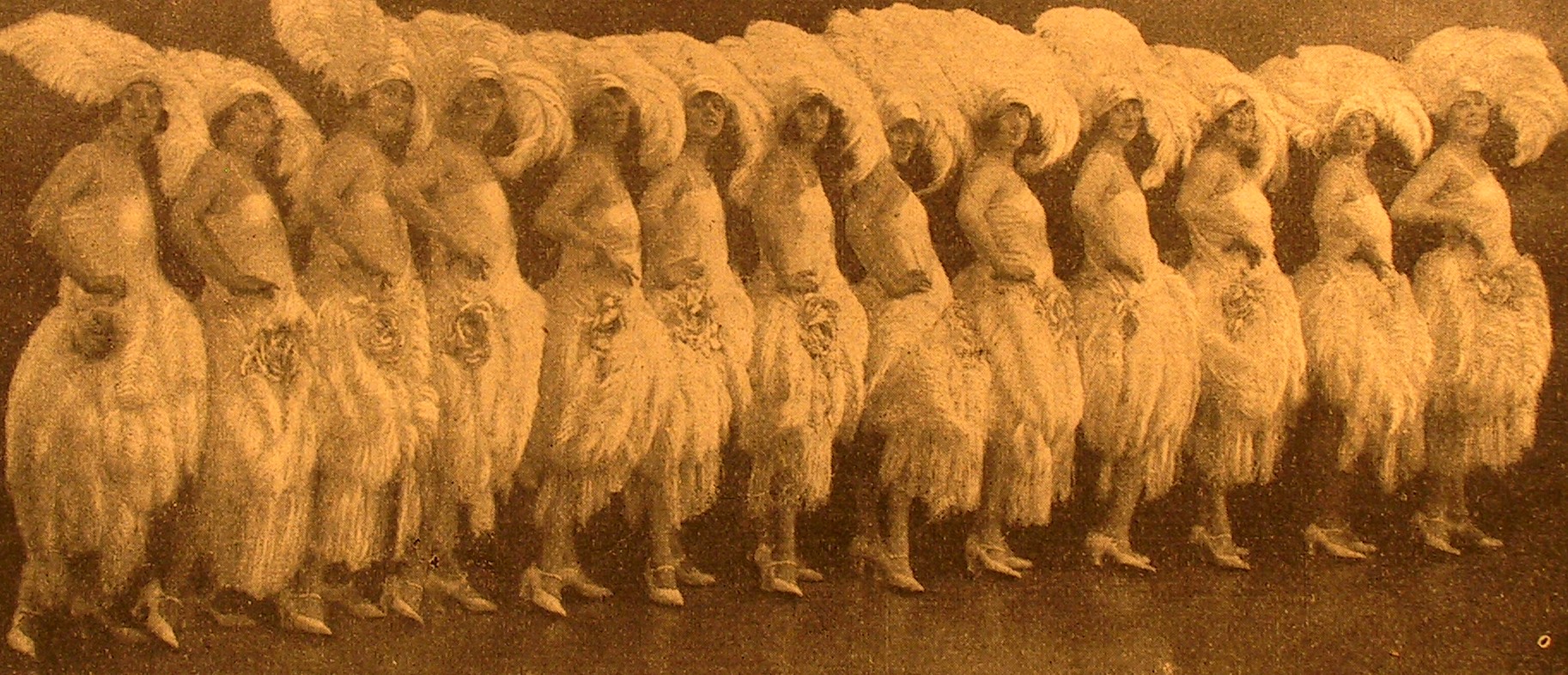
The “Mariza” girls in the 1924 Berlin production. (Photo: Operetta Research Center)
The recording, released by cpo, is based on a concert given at Munich’s Prinzregententheater in April 2018, recorded by Bayerischer Rundfunk. I don’t know whether a CD edition was planned from the start. But: If planning to enter a market already saturated with so many prominent recordings, it would have made sense to think about a ‘unique selling point.’ Or is ‘completeness’ already sufficient as an incentive to buy this double disc?
What is immediately noticeable is that though the complete Octava version is played, the many performance suggestions and instructions from that piano score are not being followed. For example, it is precisely stated how the children’s chorus at the beginning of the operetta should be handled (“1st and 2nd child”, then “3rd and 4th child”, or “the smallest child alone”).
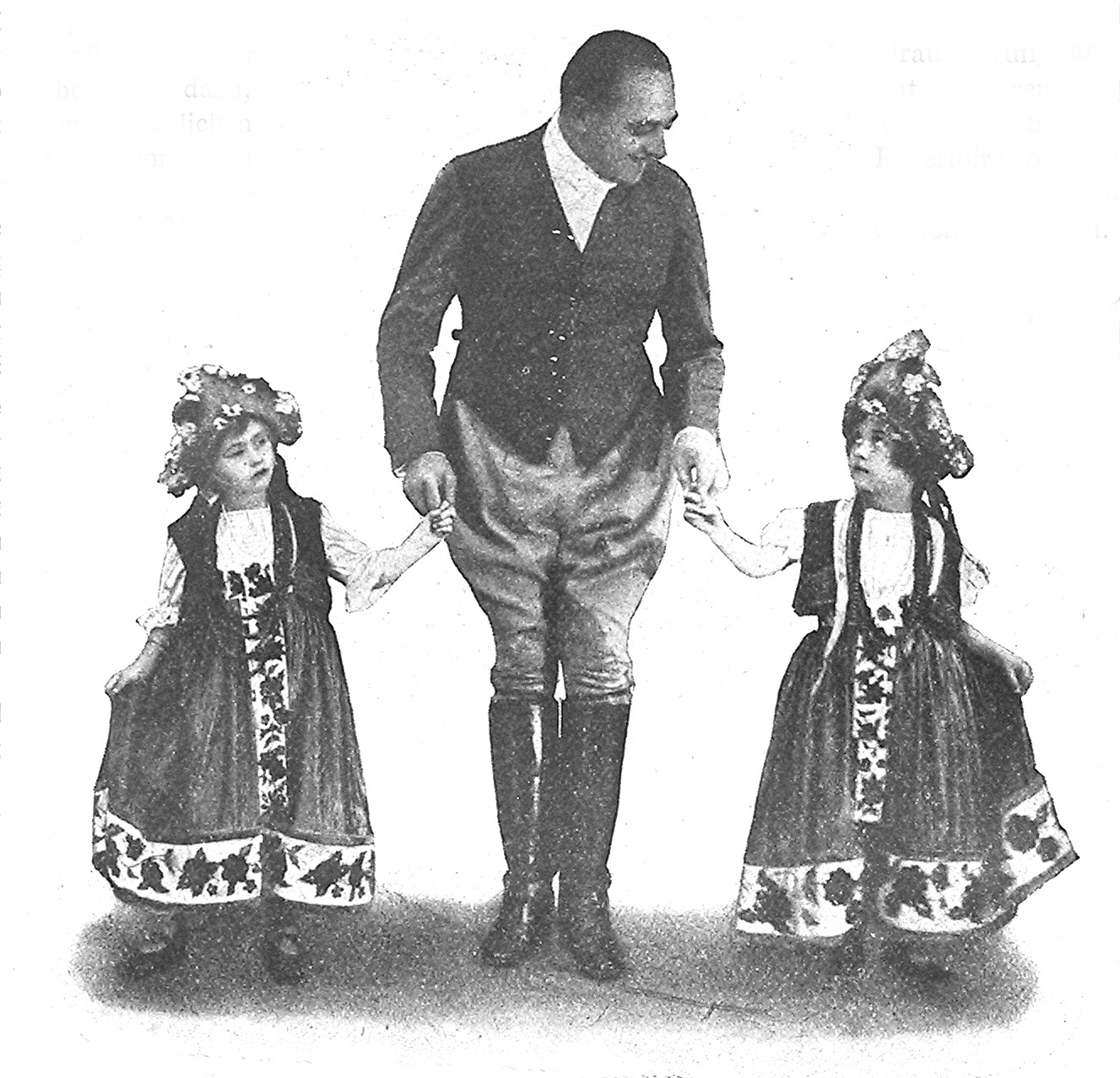
Hubert Marschka as Tassilo with the children of act 1, back in 1924. (Photo: Archive Operetta Research Center)
Under Mr. Theis’s baton the entire children’s choir sings throughout, which means that any sonic (and dramatic) differentiation Kálmán composed is lost. And that’s just one example of many.
With Mehrzad Montazeri you have a tenor who is busy copying Fritz Wunderlich’s sobs (which is very effective, albeit on the verge of parody). But he’s also a tenor who is not Wunderlich, obviously. He’s also not a particularly creative artist in terms of Gestaltung. So a conductor could have helped him by letting him sing a version of “Grüß mir die süßen, die reizenden Frauen im schönen Wien” in which the da capo of the main melody is whistled, as suggested in the piano score. That would have been “different from the others”. And an interesting nuance.
But Mr. Theis is not noticeably interested in nuances. He conducts a straightforward interpretation of Gräfin Mariza. This also means that you can only guess at the novel jazz instrumentation of the famous dance hits – for example the shimmy “Komm’ mit nach Varasdin.” You have to know that Kálmán is conciously copying Broadway and Jerome Kern here. You don’t hear it, and you certainly don’t get a Broadway bounce or typical 1920s sound effects (as notated in the score).
The only special sound world evoked are the Hungarian elements (Táragotó: Péter Horváth; Cimbalom: Olga Mishula). You could say that’s somewhat one-sided. And in contrast to a contemporary cartoon from the 1920s that showed Kálmán with a saxophone in his mouth, playing a xylophone. The line below says: “Two souls, alas, live in my breast, one full of csardas, the other filled with blues!”
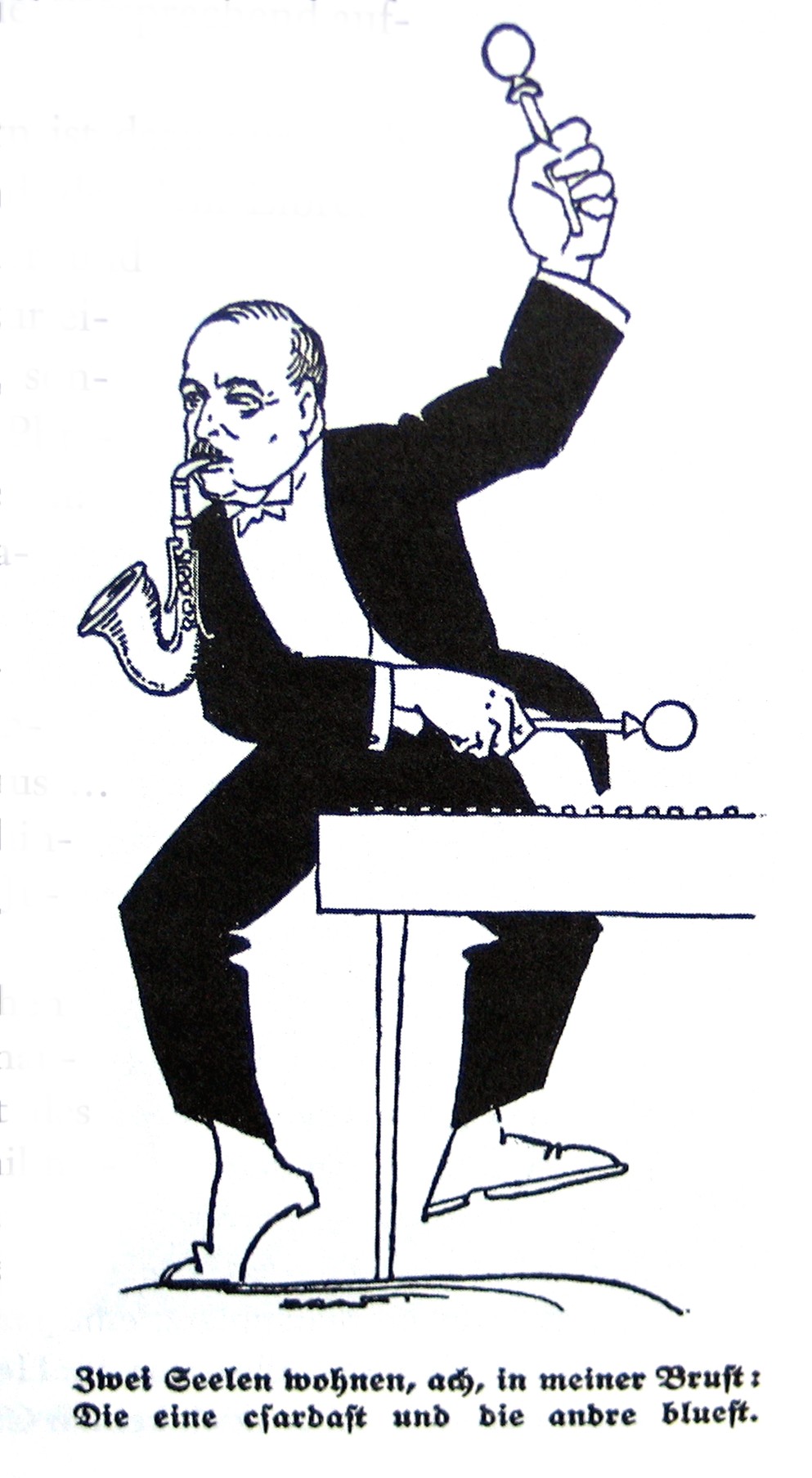
Caricature of Emmerich Kalman, “jazzing” it up in 1928.
After the many recordings with opera stars, Mr. Theis and the BR have nothing better to offer than yet another pure opera cast, albeit without stars. Instead of honoring the fact that there was not a single opera singer involved at the Theater an der Wien world premiere in 1924. Hubert Marischka presented a Tassilo “at Burgtheater level” back then, as a reviewer stated (quoted by Stefan Frey in the cpo booklet). Anyone who knows the film version from 1932, with Marischka as Tassilo, knows that he recites “Come Zigány” like a great social J’Accuse…! He never sings out, instead moving into the violent csardas that follows. A moment where Kálmán really lets the music rip.
That scene is not available on YouTube, but this one is:
I’m sure Mr. Montazeri could have managed a performance à la Marischka in front of the microphone if someone had encouraged him to try it.
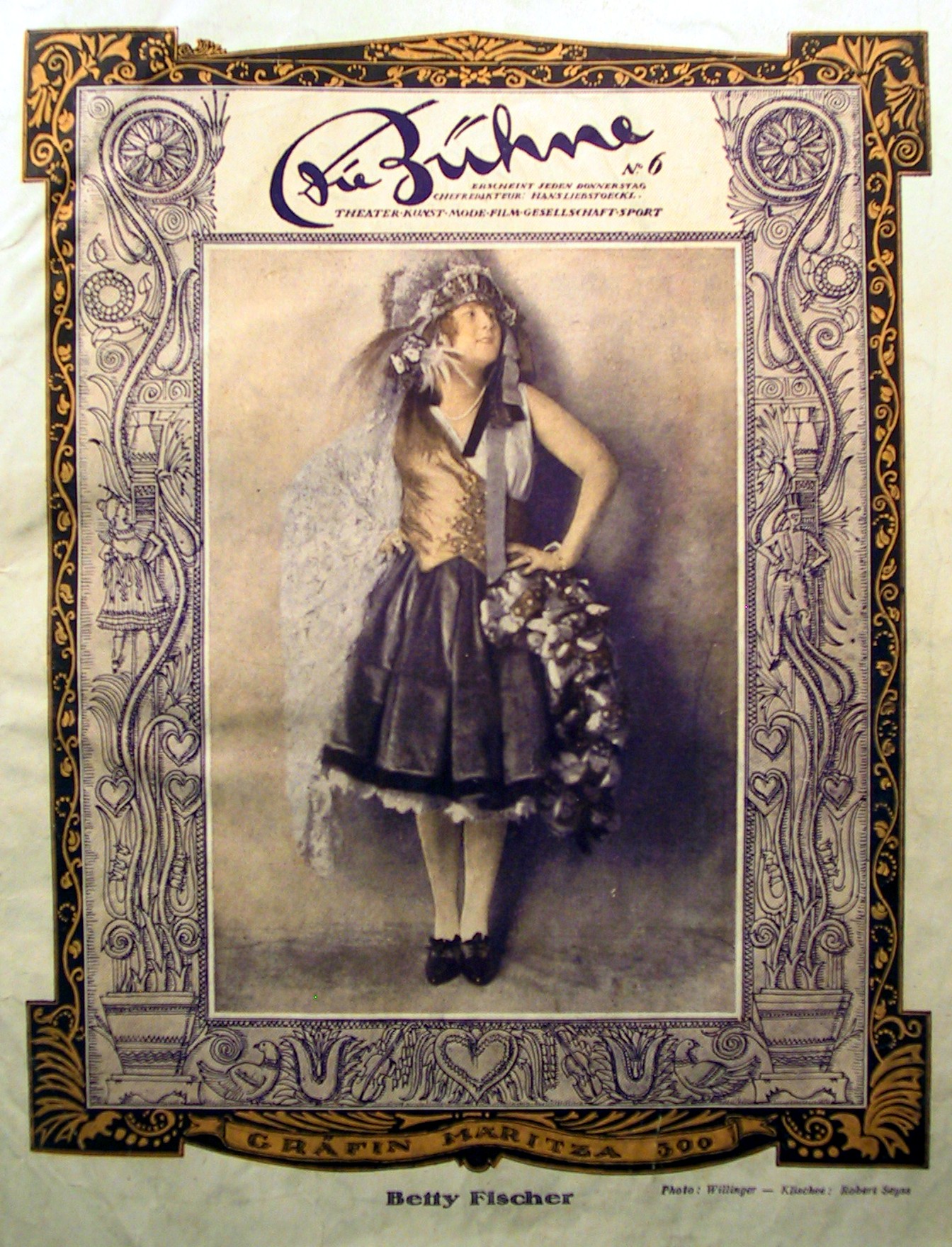
Betty Fischer as Mariza on the cover of “Die Bühne” in 1924.
Betsy Horne is the new Mariza. The remarkable textual clarity Miss Rothenberger brought to her performance of the entrance song (“Klingt ein heißer Csardastraum sinnbetörend durch den Raum”) is not to be found here, nor Rothenberger’s supreme mastery as she glides through the expansive vocal ranges.
Kurt Gänzl writes in his Musical Theatre on Record: “Anneliese Rothenberger, in the title role, is quite magnificent. She bats not an eyelash as she soars with heartfelt passion and the warmest and most beautifully even-toned voice into her demanding entrance number, taking up the csardas rhythms as if Budapest-born. From this magnificent start she soars on, making Countess Mariza into a charming, warm-hearted woman and a real singing sensation.”
If you want sensational singing, then Horne is also no match for Sena Jurinac. Or the lively Sari Barabas, who turned that csardas into something uniquely her own in the recording from 1962 with the Berliner Symphoniker under Frank Fox. Barabas is the only one on record who literally bounces through the endless fast-Parlando passages (“Willst du toll der Freude leben, soll das Herz vor Lust erbeben”) with an squeaky joie de vivre. With every word understandable and every word a statement. Miss Barabas worked with Kálmán himself in the early 1950s and was later friends with his son Charles. She obviously knew how this music “works”.
By the way: Truesound Transfers recently released an album with Betty Fischer recordings, the original 1924 Mariza. That, too, is a completely different voice, which one could have used for orientation in order to tread new interpretive Mariza paths on CD. New in the sense that they haven’t been used on record for over 70 years.

The Truesound Transfers album of Betty Fischer.
Kálmán himself conducted the duet “Say yes, my dear, say yes” with Gitta Álpár and Felix Knight in New York, 1940. The languor Kálmán evokes, sung by Álpár with a sensuality that no one else has since match, would also have been a worthwhile role model.
So why does no one listen to the geniuses of the past and learn from them?
Ultimately, you need to ask this about the buffo roles too, created by Elsie Altmann and Max Hansen in 1924. On cpo we hear Lydia Teuscher and Jeffrey Treganza as Lisa and Zsupán. They are certainly not a comedy highlight, and there’s none of Max Hansen’s tongue-in-cheek style during the duet “Behüt dich Gott, komm gut nach Haus”.
As Prince Dragomir, the Bavarian Radio offers Peter Schöne, who is completely wrong for this character part because he doesn’t possess a character voice. And Pia Viola Buchert as the fortune-telling gypsy Manja is no competition for Edda Moser on the old EMI recording under Mattes, which incidentally contains the complete gypsy scene and has Moser executing the breakneck trills Kálmán composed, but which Buchert evades.
This leaves us where?
Is it too harsh to compare the new cpo recording with all the older versions? Is it too much to ask for more than just a competent Gräfin Mariza from Bayerischer Rundfunk or from an operetta expert like Ernst Theis? Is an exceptional modern-day Mariza out of reach?
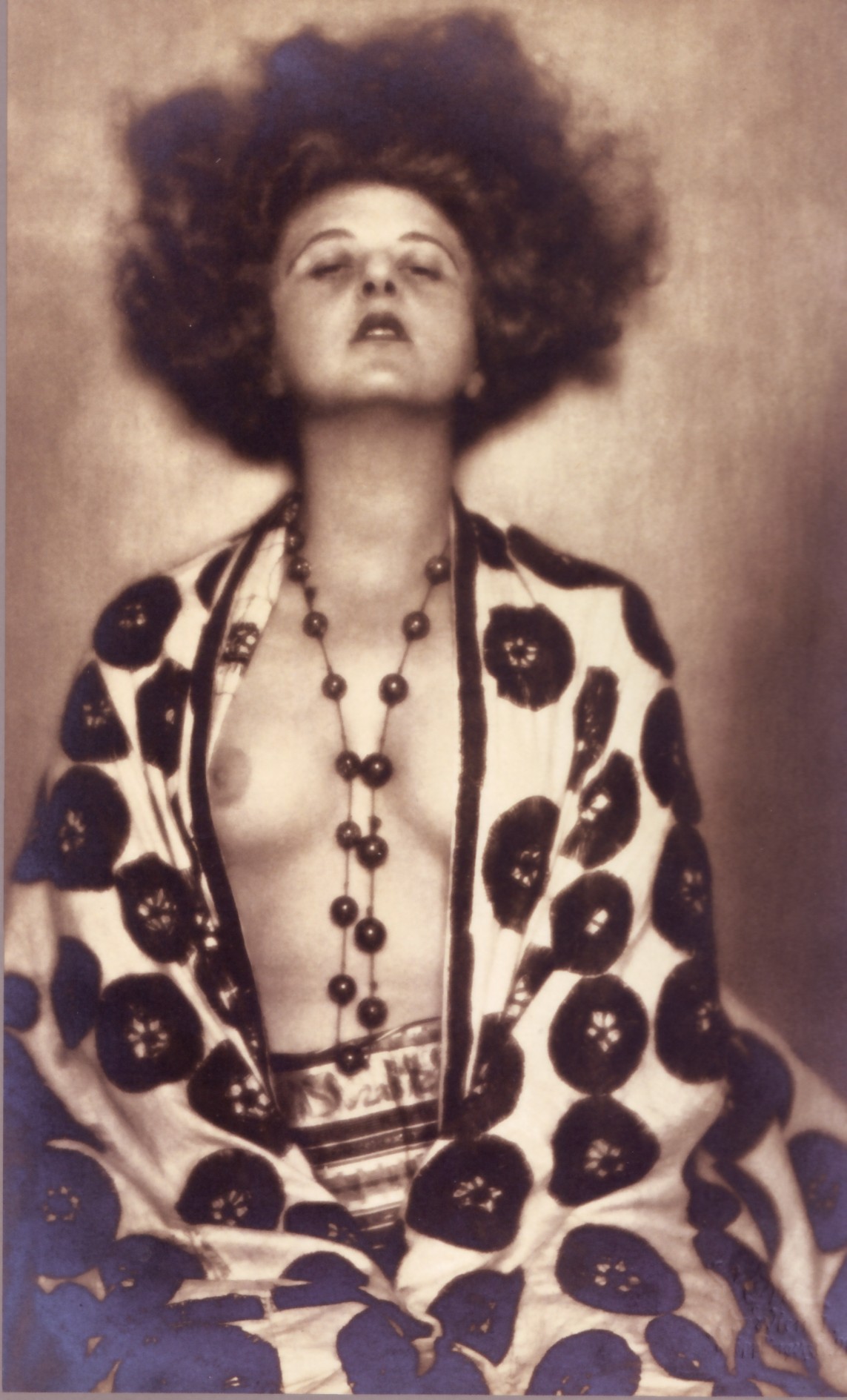
Elsie Altmann photographed by D’Ora, this photo was used in 1924 to announce the new Kálmán operetta in the Viennese newspapers.
When there is so much talk of “original” and “historically informed performance practice”: Why does nobody want to rediscover this Kálmán score from the spirit of the twenties? Why is the nostalgic and stale Puszta romanticism heated up, again and again, that has been so beloved after the Second World War and which is documented to the point of nausea on LP and CD? (Most terribly on the recording with René Kollo and Erzsebét Hazy under Wolfgang Ebert, the soundtrack to the corresponding TV operetta film.)
Anyone who wants to discover something “different” with Gräfin Mariza can listen to extensive excerpts from the 1940s on the CD Kálmán on Broadway, lovingly published by the Operetta Archive in Los Angeles (and can be ordered via them). The original Broadway version, which once ran successfully in the USA, has not yet been recorded, Ohio Light Opera created a new English version based on the Viennese original. As far as glossy voices are concerned, that recording (also published by the Operetta Archive) cannot keep up with the competition discussed here either.
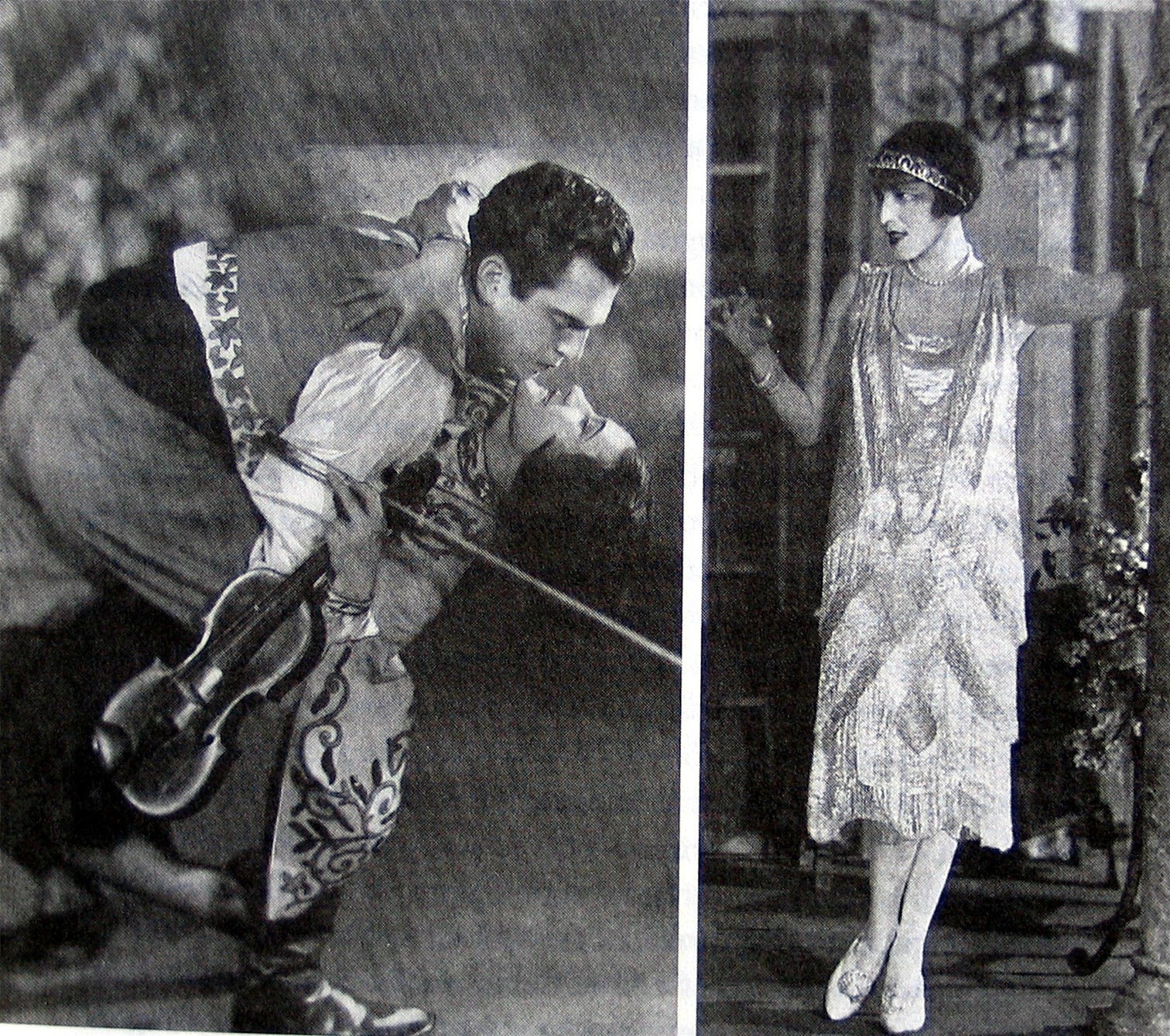
Scene from the original Broadway production of “Countess Maritza” starring Yvonne D’Arle. (Photo: Operetta Research Center)
Still, here is the first complete recording. One has to be grateful that someone finally made this effort. And, yes, the full tennis scene in act 2 is wonderful to have, even if the sex appeal is downplayed here. (Even if Tassilo sings “Ich komme schon” over and over again to the ladies, and they themselves make very suggestive remarks, equally downplayed on the new Munich version. Is this a sign of the new neo-prudery? Are we afraid of sex in operetta today? When Kálmán and Theater an der Wien advertised their new show in Viennese newspapers, back in 1924, with the near-nude Elsie Altmann, claiming she’ll “rejuvinate” the genre and the “Fach” of the soubrette.)
It remains to be seen whether this CD will be forgotten as quickly as the recording under conductor Uwe Theimer. The covers look almost identical.
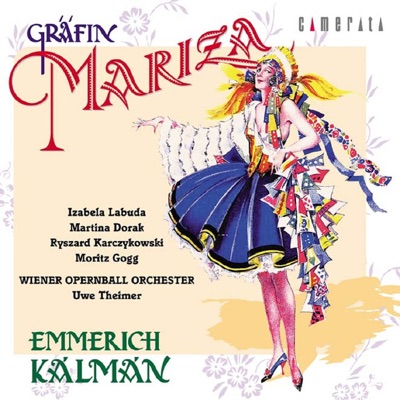
The “Gräfin Mariza” recording conducted by Uwe Theimer.
Finally, I should like to add a small comment: If you want to problematize the word “Gypsy” in the dialogue and signal your virtue to the world, then it should be done more intelligently than by Paul Esperanza (“dialogue director”) here. The accusation of racism in using the word “Zigeuner” is serious. But the Central Council of German Sinti and Roma has already said that it is ridiculous to argue about this in an operetta context when there are more important aspects of discrimination against Sinti and Roma that need to be addressed. (Read more about this here.)
And if you address that racism aspect, you can’t let the actors speak with a ridiculously stereotypical Hungarian accent afterwards. Either you are “woke” and rewrite the dialogue/lyrics (which is hardly possible), or you stand by the original. And work with it. After all, everyone involved here is well paid by public German subsidy-for-the-arts money. To not invest a minimum of effort is … shocking.

Thanks, kevin: et again you have saved me money! I will stick with Anton Paulik’s 55 minutes of jazzy excerpts on Decca!
Thanks so much for this very detailed and informative review, and the enlightening musical examples.
Gräfin Mariza is één van mijn lievelingsoperettes. Zoveel plezier aan beleefd. Bedankt voor deze interessante informatie.
Excellent analysis. I shall stick with Anneliese and Nicolai :-)
Glorious doesn’t come in this kind of package.